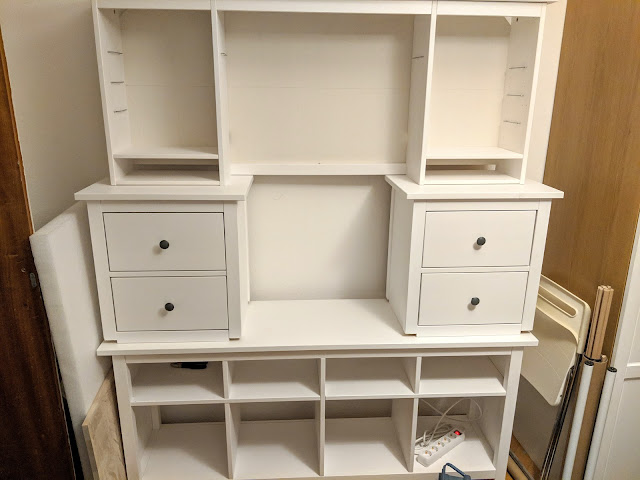Multi-hypothesis bread
I've had a string of failures with my bread recently. They just don't rise much, most of the time - once or twice they rose nicely, but most of the time they're kinda flat. Not inedibly flat, mind you, but flat enough that they aren't very enticing, not that great for things like french toast, let alone bread pudding. I have a number of hypotheses of why this could be, but rather than trying them meticulously one at a time and keep making uninspiring bread, I decided to throw them all in at once, check that I got something that works, then go from there.
So I took my standard bread recipe (except I see now I've been using 3 eggs most of the time where this post said 2, as did my older 1:1 bread post) and made the following changes:
So I took my standard bread recipe (except I see now I've been using 3 eggs most of the time where this post said 2, as did my older 1:1 bread post) and made the following changes:
- In case the yeast has too little starch to feast on: Drop the flax seed flour (which has a rather strong taste also) and increase regular flours instead.
- In case the walnuts contain something inhibiting the yeast: Drop the walnuts
- In case the eggs weren't whisked enough to aid in fluffiness: Before adding the oil, but after adding water and yeast, whisk until fairly foamy.
- In case the yeast ended up in clumps that can't get enough food close by: Knead the bread for a full 10 minutes (I had gotten lazy on the kneading, partly after reading about Nathan Myhrvold's findings that kneading didn't matter much).
What I ended up with:
- 50 g seed mix (sunflower, flax, pumpkin, and sesame)
- 150 g white wheat flour (type 405)
- 150 g whole wheat flour
- 80 g gluten
- 130 g sunflower seed flour
- 1 tbsp salt
- 3 eggs
- 20 g yeast (block, not dry)
- 365 ml luke-warm water
- 25 g oil
Put the seed mix in a small bowl and pour boiling water over it. Set it aside.
Mix together the flours and salt in a LeKue bowl (this dough is too wet to knead directly).
Whisk together eggs, yeast, and water, whisk it till foamy. Add oil and whisk a bit more.
Add liquids to the flours, then drain the seed mix and rinse it in cold water and add that, too. Mix it all well, then knead for about 10 minutes. Cover with a warm wet towel and let rise in a slightly warm place - a oven with just the oven light on is perfect. After the first rise, "punch" it down by dropping the mixing bowl on the table from about 20 cm. Prepare a loaf pan, then knead the dough some more, maybe 3-5 minutes, before dropping it into the loaf pan. Cut slits in it (I like a wheat-stalk like pattern) to allow it to rise without splitting. Leave it under the warm wet towel for a second rise, then bake in a 200C oven for 1 hour at the lowest rack.
The rising time is an interesting factor. For this bread, I did a 45 minute first rise and 45 minutes second rise. After the first rise, the dough had risen a lot and was quite stringy - could probably have been a fine "artisan" style bread if baked directly then. It rose again in the second rise, but seems to have collapsed again (I was away during baking), and wasn't super fluffy. I think 30 minutes first rise would have been better. There definitely was not problem getting the dough to rise, though!
The dough was quite wet and never formed together as a ball. While this can still work (see Toke's splat bread), it definitely requires different treatment. I might want to reduce the water, especially since the three eggs and oil add more liquid, too.
I did like the taste I got from using sunflower seed flour instead of flax seed flour, plus the bread is not as grey. It might have been a bit on the salty side, the right amount seems to be roughly 2 1/2 tsp.
I did like the taste I got from using sunflower seed flour instead of flax seed flour, plus the bread is not as grey. It might have been a bit on the salty side, the right amount seems to be roughly 2 1/2 tsp.



"splat bread". Has a nice ring to it an it is quite telling. Should it ever need a new name, that would be it.
ReplyDelete